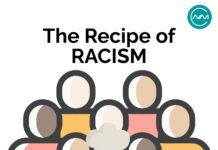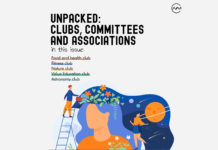Self-healing science is the world’s oldest recognized medical practice, the most ancient and living practices of which are Traditional Indian Medicine (TIM) and Traditional Chinese Medicine (TCM). The prehistoric Indian civilization had access to vast pieces of land to grow medicinal plants and herbs that were deemed necessary for the natural healing process. The practice of the same came to be known as Ayurveda. It defines health as an equilibrium of three doshas, namely Vata, pitta, and Kapha – which in essence, are various combinations and permutations of five elements, namely Akasa (space), Vayu (air), Tejas (fire), Jal (water) and Prithvi (earth).
Both otherwise referred to as alternative medicine, high-end Ayurveda medicine and TCM (Traditional Chinese Medicine) have endless potential for natural healing of ailments and symptoms as they place more emphasis on the patient rather than the illness itself. Their primary aim is to promote good health and improve the quality of life using natural therapeutic strategies by versatility in herbs and medicinal plants.
The allopathic industry has come a long way in terms of merging biological experimentation and technology. From popping aspirin for quicker relief of headaches to scientists discovering the idea of synthetic organs, which could save the lives of millions, notable advances in modern medicine have contributed to how healthcare, in general, is viewed by the public. Especially during a global situation when the economy is loosely holding together, the survival fight has narrowed down to a single entity. Who is the most immune among us?
One of the major feats in the Ayurvedic regime includes strengthening of our immune system, which has consequently given rise to the question of a possible shift to alternative medicine amidst the ongoing COVID-19 pandemic.
As the competition between nations to release a suitable vaccine continues, many pharmaceutical stores can be seen heavily stocking ‘immunity boosters’ in their cabinets. Patanjali and Dabur, besides many other FMCGs, have cashed-in a lot during the pandemic. Dabur has witnessed an increase in demand for its flagship immunity booster – Dabur Chyawanprash and the newly launched ‘immunity kit’. In addition to this, the consumption of turmeric with hot milk, lemon tea and its counterparts, and wholesale of kadha’s are not uncommon.
The reason behind the huge sales of these products is because its root lies in the roots, i.e., the holistic approach using natural remedies that do not usually result in any side-effects. Ayurvedic formulations are complex with several herbal-mineral ingredients that are governed by traditional instructions of preparation and administration.
Ayurvedic practitioners openly share their knowledge and experience, as the descriptive holy scriptures have been made accessible to the public. However, the methods practiced by ayurvedic doctors are not 100% accurate and confirmatory. They do not hold the patent rights for their medications. Whereas, in modern medicine, physicians and drug developers maintain a patent system for whatever they do and the information related to drugs or medical techniques is very private, marking the monopoly over its trade. Moreover, the possibility of a parallel ayurvedic substitute in the near future is being curbed.
It is evident that modern medicine is up-to-date with bodily functions and is subject to adapt to changes, unlike the traditional Ayurvedic scriptures. The drugs prescribed under the allopathic system undergo a chain of continuous error and trial methods before launching the drug in the market. The same goes for the invention of a vaccine. Hasty decisions and wrong approvals can lead to the destruction of the healthcare system and will directly impact the life of innocents.
The demand for Ayurvedic products is increasing worldwide as people are now more inclined towards a healthy life and attaining spiritual peace. Ayurveda holds promising potential in the global market. However, its incompetency relative to modern medicines that are fast and cheap is worth pondering. More number of research grants and creating nationwide awareness of Ayurveda is much needed for its survival. As far as the shift to alternative medicine in the coming years is concerned, millennials tend to draw towards historical practices that bring out the “Indianness” inside them. In addition, if the validity checkbox of the findings is verified, the reach of an Ayurvedic healthcare system is endless.
-Written and curated by Tanzeela Inam, Venkata Geeta Soundarya Lahari and Snehdeep Kumar





